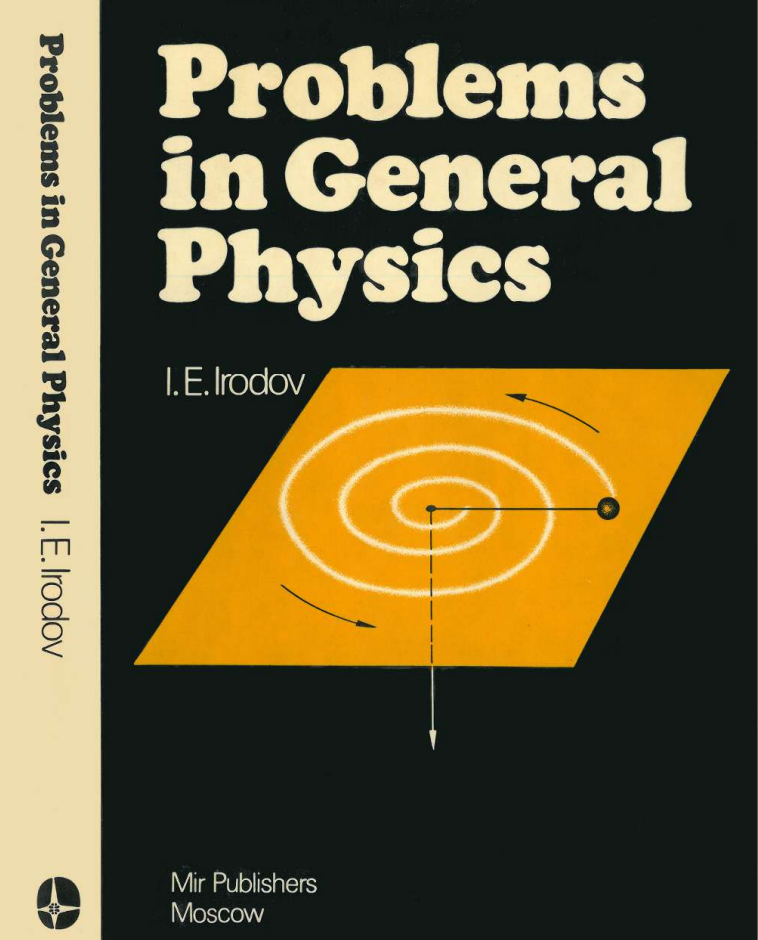Solving problems is a core component of learning. Simply reading through a math book will not do a student much good unless they also do the exercises.
Problem books are a category of books that cater to this. These books are curated collections of problems, solving which will clarify and improve a student’s understanding.
Problems in General Physics by Irodov is one of the most popular of such books for Physics in India.

During the space-race/cold war era, USSR was trying to prove its technological superiority to the world.
A State Science publishing company called Mir Publishers was set up towards this purpose.
High quality science books were published and sold at throwaway prices in countries across Asia and South America, including India.
Entire generations of kids in these countries grew up reading these books and respecting Russian scientific prowess.
I enjoyed Physics as a kid and solved some problems from this book almost 10 years ago. I always wanted to go back and solve more.
When I recently tried to, I observed the following issues.
Inability to track Progress
7 years ago, I progressed through some of the problems. However I don’t have that book with me anymore. Along with the book, all indications of progress also vanished.
The book has 1900+ problems and I’m not an active student anymore. If I wanted to solve all of these, it would take me multiple years.
Having to flip 200 pages to see the answer
But those are just limitations of book as a medium?
True. Back in 1979, Prof. I.E. Irodov only had this to work with and he did the best he could. Today we have computers. But I tried to access the same book via a PDF, the same problems existed and were exacerbated.
I wanted to fix it.
I could instantly imagine in my head how these problems would be trivial to solve with the computer as the medium..
- Just have a ‘reveal answer’ button beside the question that would reveal the answer upon a click
- A ‘mark complete’ button beside the problem using which you could track your progress through the book
But it wasn’t simply the challenge of solving these problems that compelled me..
Thousands of students each year in India solve problems from this book while they prepare for competitive exams. They already purchase a physical book or use the PDF.
What if I built this product for them? Would they pay to use it? If I believe I’m creating a better experience, what better validation than a customer paying money to use it. I wanted to see how far I could get.
But on my terms. Designing for this project felt different than usual. From the very beginning, I just had a very clear vision of what I wanted the eventual outcome to feel like.
I had one principle in mind.

And that’s it, that was the core experience of the book, but since I was trying to build a product that people would purchase, I also had to design the following —
- Sign up / Login Flows
- A purchase flow
- Different states for the home-page
- What a non-logged in user see
- What purchased user would see
- What a logged-in not purchased user would see
The 16 screens below describe the entire flow.
I tried to stay true to the original books design.

Well, I built it — solveirodov.com
I taught myself enough Javascript and Express to make this idea a reality and spun up an Amazon EC2 instance where this website now lives.
The site gets ~3,500 views each month.

and it’s nice to see something I’ve made show up in google search results.

But I’m yet to get a paying subscriber.
I’m yet to do a proper post-mortem. I believe I did design a better experience of using the book versus browsing it on a PDF.
I can only assume that was not enough value to justify a purchase. It appears I was heavily miscalibrated about what makes a product worth purchasing for a user.
Perhaps I didn't put enough effort into distribution/sales/reaching out to prospective customers?
I intend to conduct a proper post-portem soon after I finish working on my portfolio. Part of me is reluctant to even call this a dead-project.
After the initial high of having built a product end-to-end by myself, I kind of just let it stew by itself. I have a few ideas for how I can still try to revive it...
 PREV
PREV
